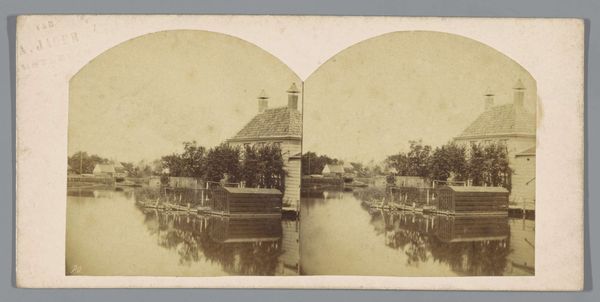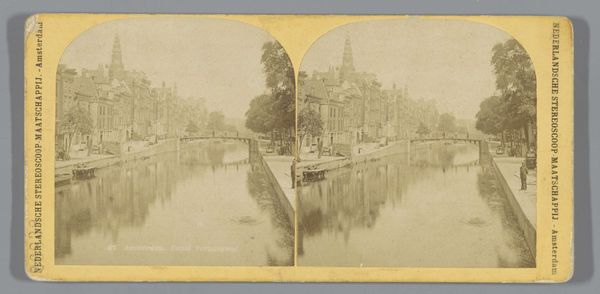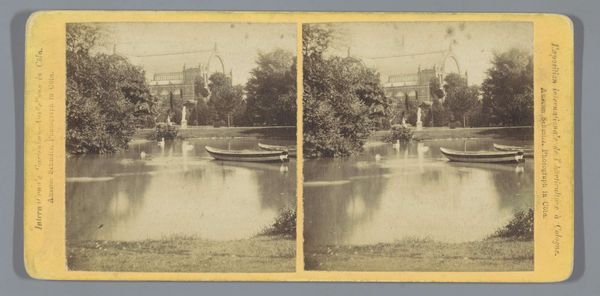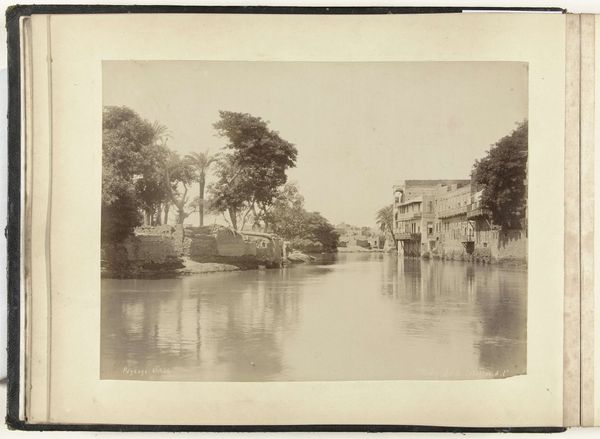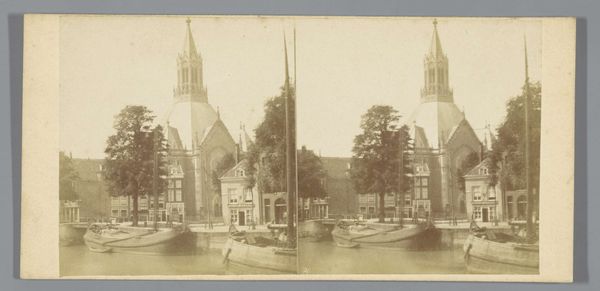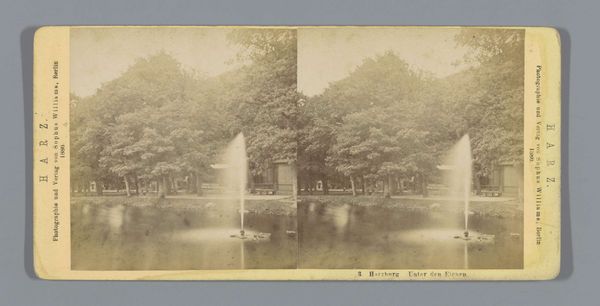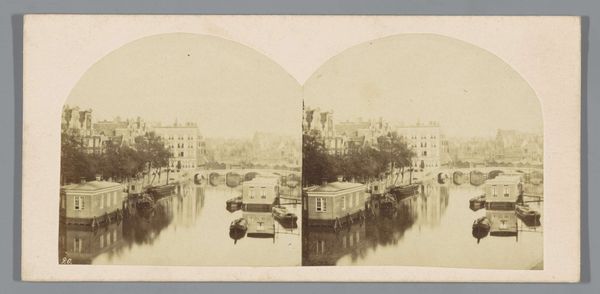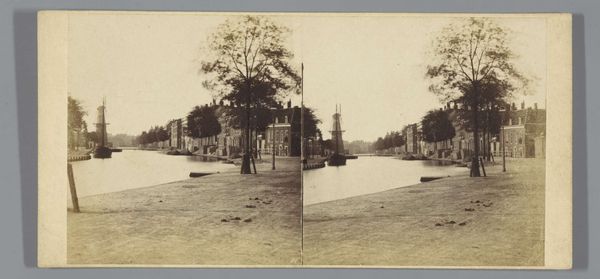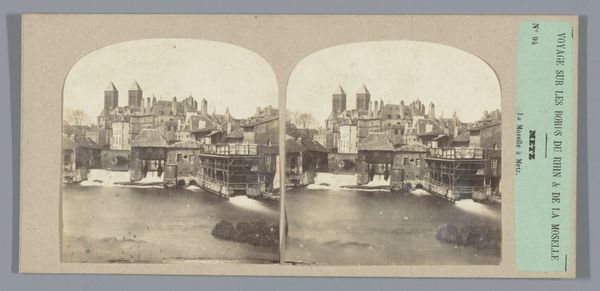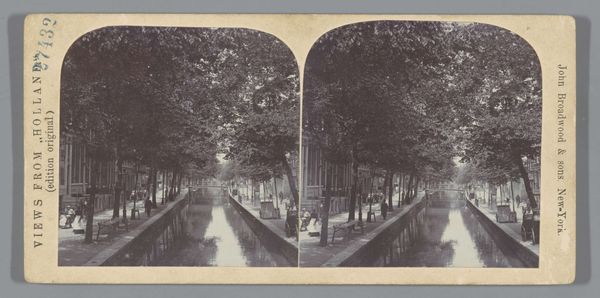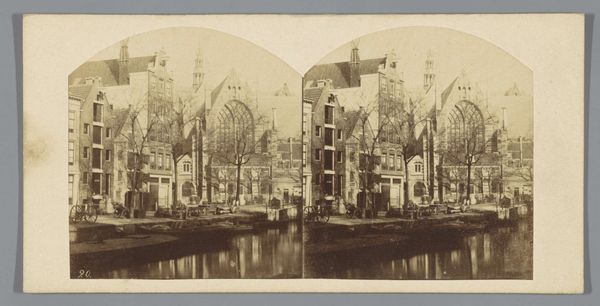
Gezicht op de Oudegracht en de Dom, gezien vanaf de Smeebrug, Utrecht 1859 - 1865
0:00
0:00
pieteroosterhuis
Rijksmuseum
Dimensions: height 87 mm, width 173 mm
Copyright: Rijks Museum: Open Domain
Curator: Pieter Oosterhuis created this photo between 1859 and 1865. It is titled "View of the Oudegracht and the Dom, Seen from the Smeebrug, Utrecht". Editor: It has such a stillness. The canal’s surface is like glass, perfectly reflecting the architecture. There’s a sense of order and calm, despite being a cityscape. Curator: I agree. Consider that at the time this was made, photography was in its relative infancy, accessible mainly to the upper classes, giving a limited voice on matters of representation and meaning-making in urban spaces like these canals. Oosterhuis was a pioneer, who documented Dutch cityscapes as they were transforming in that era. Editor: Absolutely. That tower, the Domtoren, dominating the skyline...it’s such an iconic symbol. Its sheer height carries such weight and tradition. This almost creates a visual language about the Dutch ambition in creating sacred spaces. Curator: Precisely. Beyond the aesthetics, the tower represents centuries of cultural and religious history. Utrecht itself was, and is, a vital node. Its citizens shaped theological, economic, and cultural developments in The Netherlands. The Domtoren was deliberately placed at the very heart of it all. This image places that landmark deliberately against everyday canal life, the people working and living in its vicinity. Editor: These waterways tell stories too, don’t they? Canals historically functioned both as vital arteries for commerce and defense, each bridge like a landmark, with steps as a symbolic reference. The photo preserves an exact sense of depth; light and shadows interacting in ways that create a beautiful balance. The tones capture the mood perfectly, this subtle sepia of remembrance. Curator: The use of pictorialism is central, indeed. Oosterhuis manipulated the photograph to achieve a softer, painterly quality, aiming for artistic recognition of his new medium. As it did for a variety of nineteenth-century photographers, photography gave the Dutch an alternative way of exploring class and modernity in their expanding cities, separate from paintings and literary canons. Editor: It's compelling how one can weave so many narrative threads from a seemingly straightforward image. It certainly goes far beyond just an architectural document, doesn’t it? Curator: Without a doubt. Images always negotiate power, culture, and human presence. It is impossible to imagine this city in the same way now without having access to these powerful frames.
Comments
No comments
Be the first to comment and join the conversation on the ultimate creative platform.
